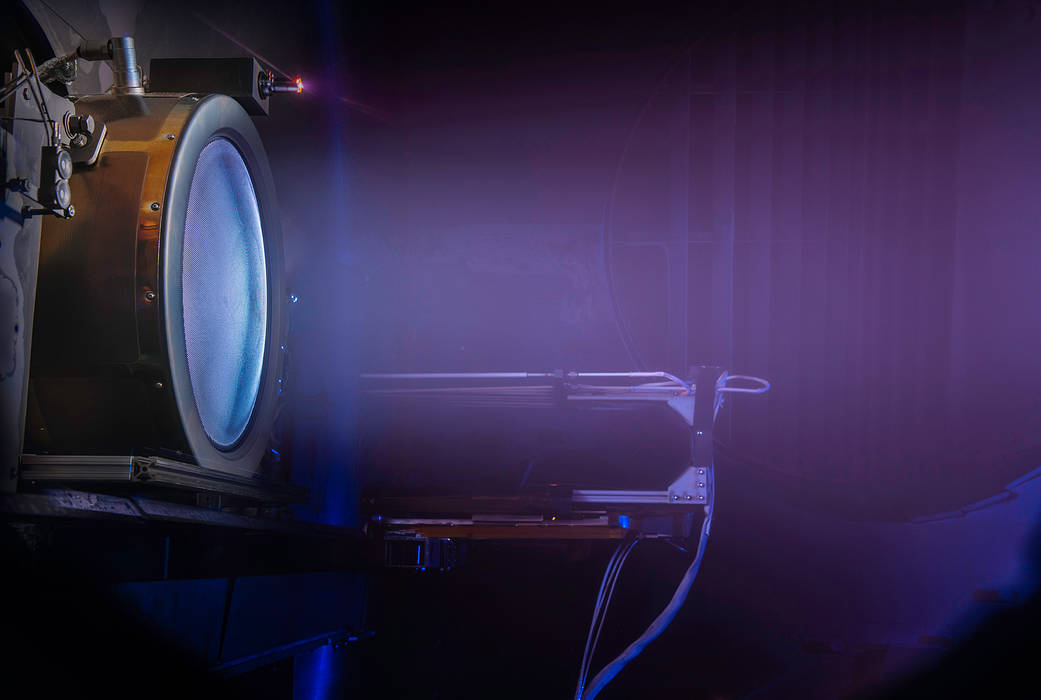Humans are currently grappling with numerous emerging threats on our planet, ranging from an ongoing pandemic to the long-term risks of climate change. But we are also vulnerable to forces beyond Earth, such as potential collisions with asteroids.
While these impacts rank relatively low in the scheme of likely apocalyptic scenarios, it is still vital to have a contingency plan in case a hazardous object does end up on a crash course with Earth. NASA’s Double Asteroid Redirection Test (DART), which is due for launch in July 2021, is the latest mission to establish a game plan for this particular variety of doomsday. DART is tasked with slamming into a small asteroid to see whether it can be knocked off course—a strategy that could potentially be replicated for asteroids on a warpath with Earth.
The mission will be accelerated toward its target, the Didymos binary asteroid system, by a next-generation ion engine called the Evolutionary Xenon Thruster–Commercial (NEXT–C), which has never flown in space before.
What is an ion engine?
Developed jointly by NASA and the company Aerojet Rocketdyne, this thruster will use solar power and ion propulsion to place DART on a ballistic trajectory to the Didymos system. While it is not the first ion thruster to be incorporated into a space mission, NEXT-C is about twice as large and three times as powerful as its predecessor on NASA’s Dawn mission.
“It’s got more thrust available,” said Terry O'Malley, project manager for NEXT-C at NASA’s Glenn Research Center, in a call. “It’s really good for in-space propulsion.”
Ion engines offer a very different type of space propulsion compared to traditional rocket engines that rely on volatile fuels. The thruster runs on electricity powered by DART’s solar panels, which is then used to heat up xenon propellant until it becomes an ionized plasma. In other words, xenon atoms become ions, which are particles that have an electrical charge due to the loss or gain of electrons. In this case, the xenon loses its electrons, transforming it into positively charged ions.

These ions are drawn toward two gridded screens riddled with thousands of tiny holes. After they pass through the first screen, which has a positive charge, they get a sudden speed boost from the second negatively charged screen.
“What we have is basically two screens that are pretty close to each other and we establish a high voltage of 1,000 volts to 2,000 volts, depending on what thrust you want,” O’Malley explained. “Once you establish that voltage potential, it essentially shoots the ions out the front of the thruster. That’s what creates the thrust.”
Xenon is a particularly good propellant because it is relatively inert, unlike more volatile fuel sources such as hydrazine. Its unreactive nature lowers the risk of explosions and catastrophic damage to a spacecraft. For this reason, ion thrusters are especially useful for long-lived missions tasked with visiting multiple celestial bodies.
“Ion engines are very efficient in regards to use of fuel and xenon,” O’Malley said. “The Dawn mission was able to visit a couple of different asteroids.”
How could the ion engine one day save humanity?
While future missions may take advantage of NEXT-C’s longevity and stability, DART will be a relatively quick trip that will demonstrate the new thruster’s capabilities for the first time in space.
Once DART is launched off Earth by SpaceX’s Falcon 9 rocket, NEXT-C will take over and accelerate it toward the Didymos system over a period of about 15 months.
Didymos is composed of an 800-meter-wide asteroid, known as Didymos A, which is orbited by a moon one fifth its size, called Didymos B or “Didymoon.” Though this system is not hazardous to Earth, its orbit around the Sun occasionally brings it within a few million miles of our planet.
This proximity, and the unique binary nature of Didymos, make it an ideal destination for an impactor. If all goes to plan, DART will crash into Didymos B in October 2022 at a speed of about 6.6 km/s (3.7 mi/s).
Following the crash, scientists will monitor the predicted shift in the moon’s orbit, which is expected to be fairly small. But even the slightest nudge will help scientists understand the efficacy of the plan to redirect hazardous asteroids to protect Earth.
NEXT-C is already being considered as a propulsion source for future sample-return missions to asteroids and comets, and it could be adapted to steer commercial satellites that need to move to different trajectories in low-Earth orbit. So while DART may be the thruster’s first journey in space, it is unlikely to be the last.
from VICE https://ift.tt/347KjNV
via cheap web hosting
No comments:
Post a Comment